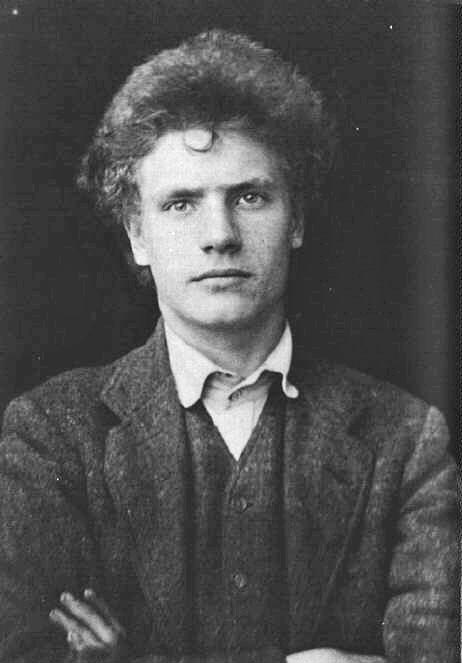Austin Osman Spare, born on December 30, 1886, left an indelible mark on the world as an English artist and occultist. His life’s journey unfolded against the backdrop of a changing London, and Spare’s artistic and esoteric explorations traversed the realms of symbolism, art nouveau, and the mysterious corridors of the occult.
Spare’s early life was rooted in the working-class neighborhoods of Snow Hill, Smithfield, and Kennington. Born into a family of modest means, his artistic talents bloomed early, catching the attention of the art world. A scholarship paved the way for him to study at the Royal College of Art in South Kensington, where his unique style began to take shape. In a departure from the academic norm, Spare’s art focused on clear lines, influenced by luminaries such as Charles Ricketts, Edmund Sullivan, and Aubrey Beardsley.
However, Spare was not content with merely mastering the visual arts. His intellectual curiosity led him to explore Theosophy and Western esotericism. This fascination brought him into contact with the infamous Aleister Crowley and his mystical order, A∴A∴. Despite a brief association, Spare developed his distinct occult philosophy, birthing a series of occult grimoires such as “Earth Inferno” (1905), “The Book of Pleasure” (1913), and “The Focus of Life” (1921).
Spare’s art, characterized by its clear lines and the exploration of monstrous and sexual themes, gained early recognition. In 1904, he became the youngest entrant at the Royal Academy summer exhibition, drawing attention from both critics and the press. His art magazine, “Form,” emerged during World War I, but it struggled to find its footing and eventually succumbed to poor reception.
The post-war years marked a significant shift for Spare. Drafted into the armed forces, he served as an official war artist, documenting the horrors of conflict. Following the war, Spare faced financial struggles, moving through various working-class neighborhoods in South London. Despite living in poverty, he continued to exhibit his work, maintaining a tenuous connection to the art world.
Spare’s spiritual legacy found a torchbearer in his friend Kenneth Grant, a Thelemite author, who kept the flame of his esoteric beliefs alive in the latter part of the 20th century. The influence of Spare’s sigilization techniques resonated in the chaos magic movement and Thee Temple ov Psychick Youth.
The 1930s saw surrealism take center stage in London’s art scene, prompting a renewed interest in Spare’s work. Critics and the press revisited his creations, recognizing them as early precursors to surrealist imagery. Unfortunately, the Blitz during World War II cost Spare his home, plunging him into relative obscurity in the post-war years. However, his art experienced a resurgence in the 1970s, coinciding with a revival of interest in art nouveau in Britain.
Spare’s personal life was marked by complexity. His marriage to Eily Gertrude Shaw in 1911 brought forth tension, as she struggled to understand his intellectual and artistic pursuits. Despite the challenges, Spare continued to produce notable works, including “The Book of Pleasure,” which delved into his mystical ideas about the human psyche and the unconscious mind.
In the crucible of World War I, Spare found himself conscripted into the Royal Army Medical Corps. As an acting staff-sergeant, he contributed to the war effort by illustrating the conflict, adding another layer to his multifaceted artistic legacy.
Austin Osman Spare’s life was a tapestry woven with threads of art, mysticism, and a relentless pursuit of the unknown. From the vibrant energy of his early exhibitions to the obscurity of his later years, Spare’s journey embodies the enigmatic intersection of creativity and the occult in the tapestry of 20th-century London.

